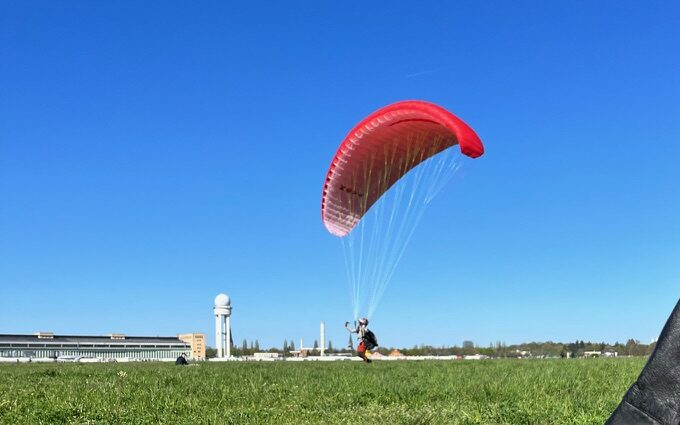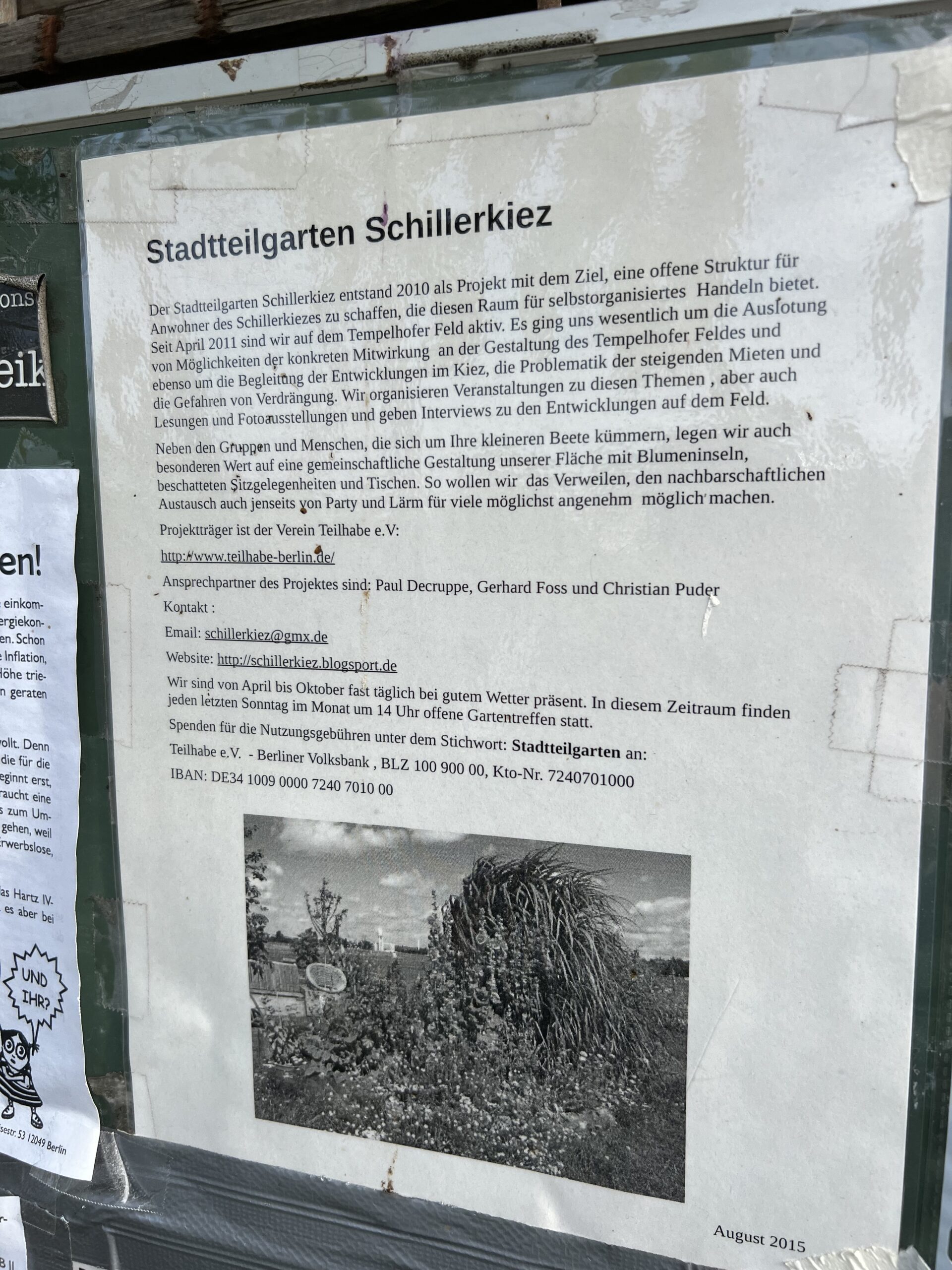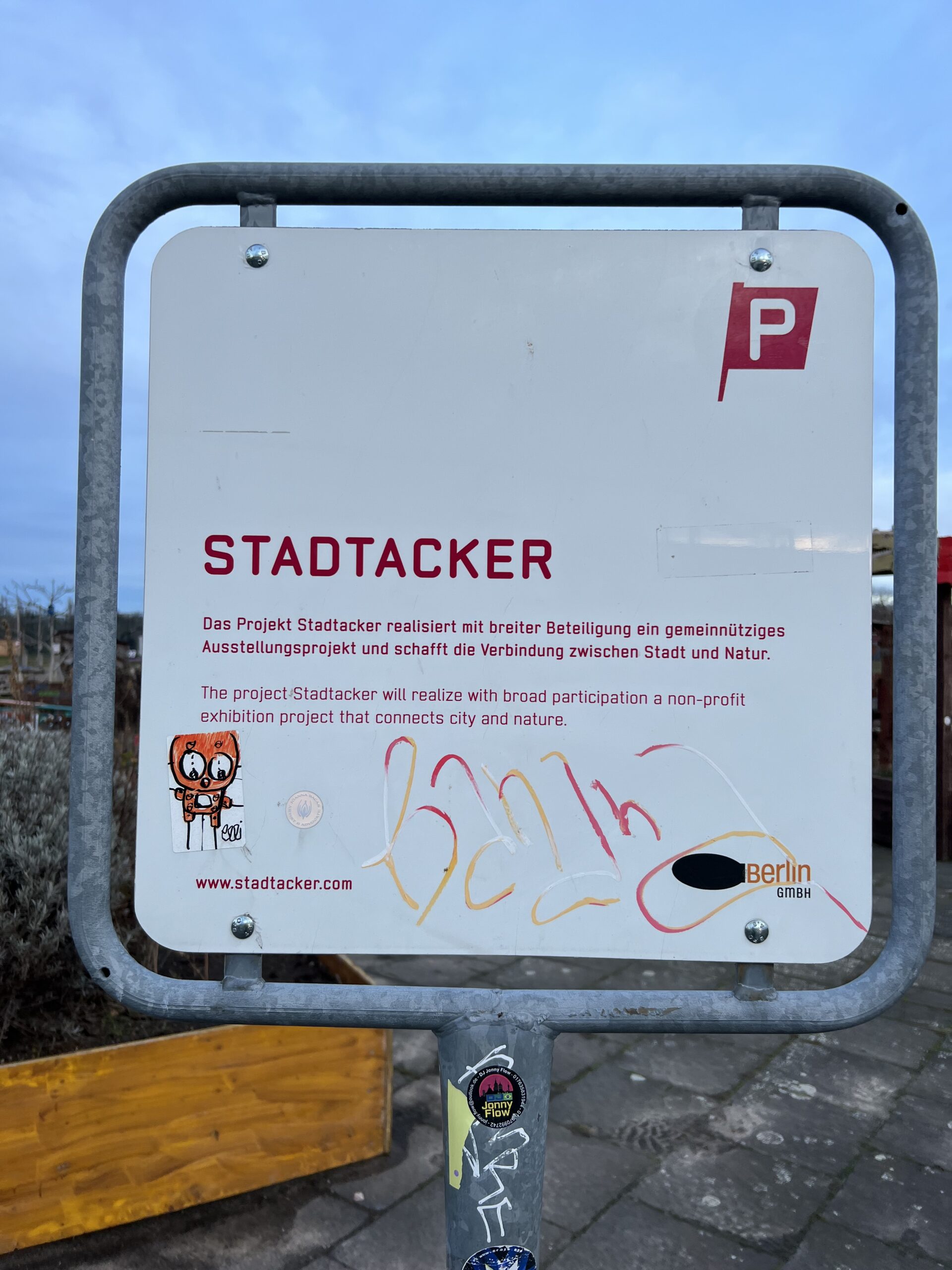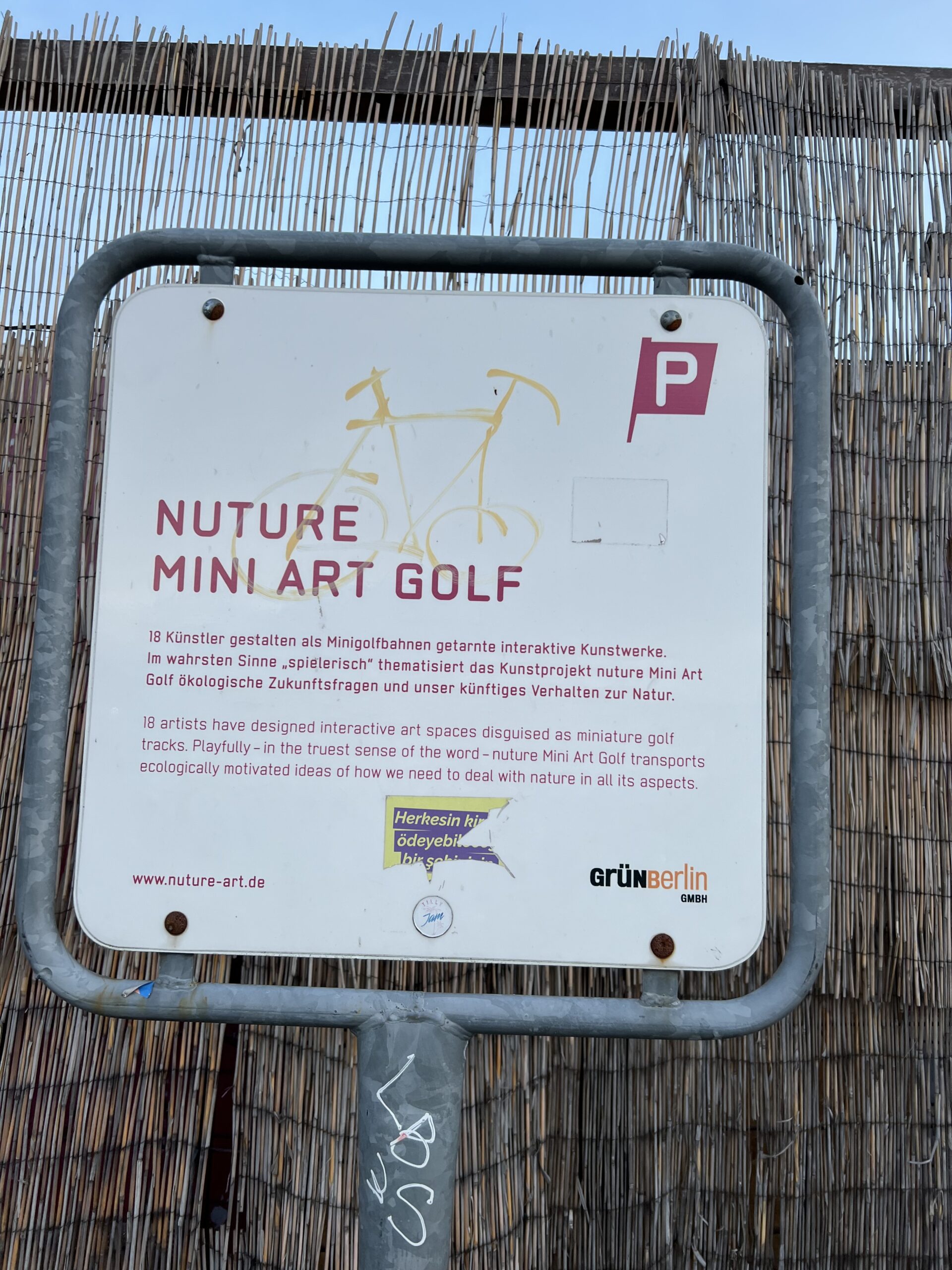It is beyond the scope of this project to encompass and accurately outline every activity that takes place on the Tempelhof Field as there are as many uses as there are users themselves. It is, however, part of the central research question to investigate who uses the field, and thus, explore how it is used in deriving meaning. Here, I identify the main ways that those interviewed use the space in ways that give it meaning to them.
The field’s ability to accommodate many activities includes but is not limited to: wind sports, team sports, personal recreation purposes, educational extension classrooms, community gardens, bike workshops, tours, historical walks, conservation initiatives, and more. For the purposes of this project’s research question, identifying activities serves to help us understand what activities help give the site meaning to those identified as users of the field. That line of investigation resulted in sub-categories of education and learning; relaxation and recreation; gardening; and volunteering.

For both Juan and Kristin, the latter of whom now works in a paid position for Allmende-Kontor (AK), volunteering remains an important aspect of the way they are involved in the garden. Pioneer Projects like AK are fully funded by the involved parties and receive no government funding, thus relying on volunteer involvement. For Juan, responsibility and a sense of community is part of the assignment, and as a member of the board, sharing responsibility is common, “we all share these roles,” he says, “at the end we all do this as a volunteer”.1 While volunteering is the only way to keep the garden running, those involved share responsibility for the space and their own plots, as well as rotating tasks in their garden zone. Juan shared the color-coded map of the garden, divided into sections that take on rotating tasks. As a member of the board, Juan’s responsibilities are also shared with other board members, who help one another in a group effort to keep the garden running. Community responsibilities are at the core of Allmende Kontor’s operations.
Educational opportunities are additional activities on the field that specifically facilitate community connection and draw in users. One of them is Lernort Natur, a natural learning space and outdoor learning center that hosts kids, schools, and parents on its 1,000 square meter site to facilitate interactions between children and natural phenomena.
The M.I.N.T Green classroom is another example. A project of the Peter Petersen Primary school, the classroom holds lessons in natural science, allows schoolchildren to plant and raise crops annually, trending to them and eventually harvesting and eating together. The classroom hosts art, German, and mathematics lessons too, but makes particular use of the “open space of the Tempelhofer Feld,” which “offers a unique opportunity to thematise long distances and to experience natural spaces in a realistic way”.2
Similarly, Allmende-Kontor opens the garden for children, hosting workshops about beekeeping and gardening, “so that children have more, kind of, possibility to be a little bit more close to the insects and not to be afraid of them,” and to learn where honey comes from.3 Through learning to beekeep himself and facilitating workshops, Juan has learned a lot and made “good friends” along the way through their common interests and hours spent learning.4 For Allmende-Kontor, learning in the garden is a free opportunity, “and what is also very important to us about the garden, is that we are a non-commercial place. It’s a non-profit organization,” said Kristin.5 Thus, all events organized are opportunities for learning, but also social events that have no pay barrier.
“We are a community garden, which also means that we do things together and of course we’ve become friends over the years and we meet up and organize action days together, but we also use the field and the garden simply as a place to rest and relax.”6
They “have a lot of Fests”, says Juan, referring to the multiple annual events hosted by the garden for the entire community, such as the harvest fest and a new year’s fest, designed to get people involved.7 The activities of gardening, learning, socializing, resting, and relaxing all become methods of facilitating social interaction, a point stressed heavily in the UFZ study on the social value of Tempelhof Field.8

A sign from the Schillerkiez neighborhood community garden, describing the goal of the garden in providing an open space for the residents of neighboring Schillerkiez to self-organize and become involved with the developments happening on the field and in their neighborhood.
They organize events to discuss topics of rising rent, the dangers of displacement, as well as readings and photo exhibitions. It reads: “In addition to the groups and people who take care of their smaller beds, we also attach particular importance to the communal design of our area with flower islands, shaded seating and tables. In this way, we want to make it as pleasant as possible for many people to linger and engage in neighborly exchange beyond the party and noise”.
Photo by author, October 2022.
Activities do not have to be rambunctious to be appreciated by Berlin residents, and interviewees shared that many of their favorite recreation is relaxation on the field. Juan named finding “space where I can disconnect”, as one of his favorite things to do on the field.9 “When I am done with the garden I like to go to a specific spot where I can just sit down and to make like Feierabend. Yeah, I think this is one of my favorite parts of the days when I yeah, when I can say okay, my day it’s over and now I can chill”.10
She might work on the field now, but Kristin considered “enjoying the space and the relaxation” to be her original purpose for using the field.11 René—who admitted not even liking Tempelhof Field—noted how he, as well as people of all ages in Berlin, like to go to the field to meet friends, hang out, drink, barbecue, and more.12
The learning programs, personal recreation opportunities, and overall pilot character of activities is part of what makes Tempelhof Field such a site of innovation and experimentation.13
“The field also offers civil society an option space in which new things can be tested and experienced and where people can exchange ideas – for unusual types of sport as well as for new formats of culture and encounters.”14


- Juan Coka Arcos, Zoom interview with Clara Feldman, November 16, 2023. ↩︎
- “M.I.N.T. Green Classroom on the Tempelhofer Feld.” www.tempelhoferfeld.de, n.d. https://www.tempelhoferfeld.de/en/discoveries-experiences/civic-engagement-projects/mint-green-classroom/. ↩︎
- Juan Coka Arcos, Zoom interview with Clara Feldman, November 16, 2023. ↩︎
- Ibid. ↩︎
- Kristin Hensel, Zoom interview with Clara Feldman, November 11, 2023. ↩︎
- Ibid. ↩︎
- Juan Coka Arcos, Zoom interview with Clara Feldman, November 16, 2023. ↩︎
- Brenck et al. “Gesellschaftliche Wertigkeit des Tempelhofer Feldes – Qualitäten erfassen und sichtbar machen.” Helmholtz-Zentrum für Umweltforschung GmbH – UFZ, November 2021. ↩︎
- Juan Coka Arcos, Zoom interview with Clara Feldman, November 16, 2023. ↩︎
- Ibid. ↩︎
- Kristin Hensel, Zoom interview with Clara Feldman, November 11, 2023. ↩︎
- René Kreichauf, Microsoft Teams interview with Clara Feldman, December 5, 2023. ↩︎
- Brenck et al. “Gesellschaftliche Wertigkeit des Tempelhofer Feldes – Qualitäten erfassen und sichtbar machen.” Helmholtz-Zentrum für Umweltforschung GmbH – UFZ, November 2021: 69. ↩︎
- Ibid., 69. ↩︎